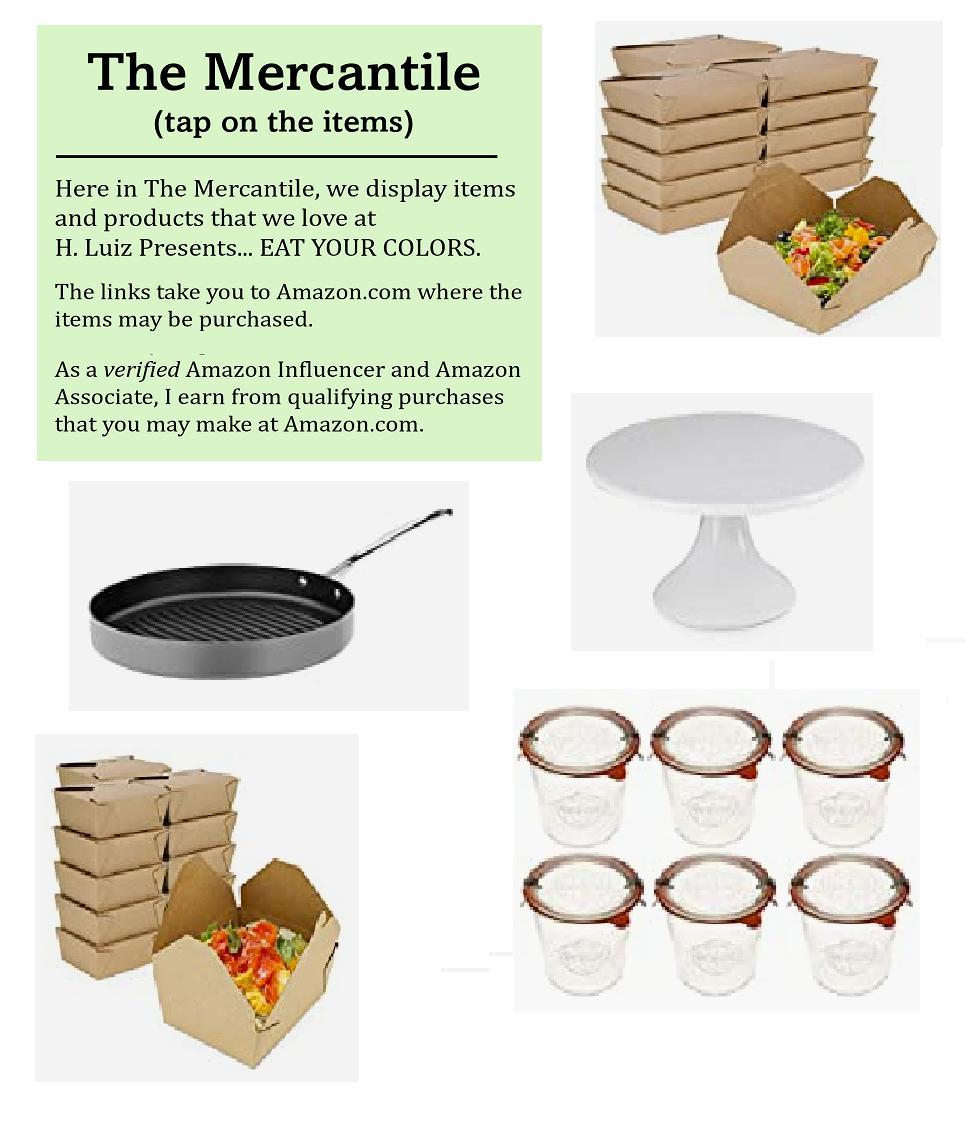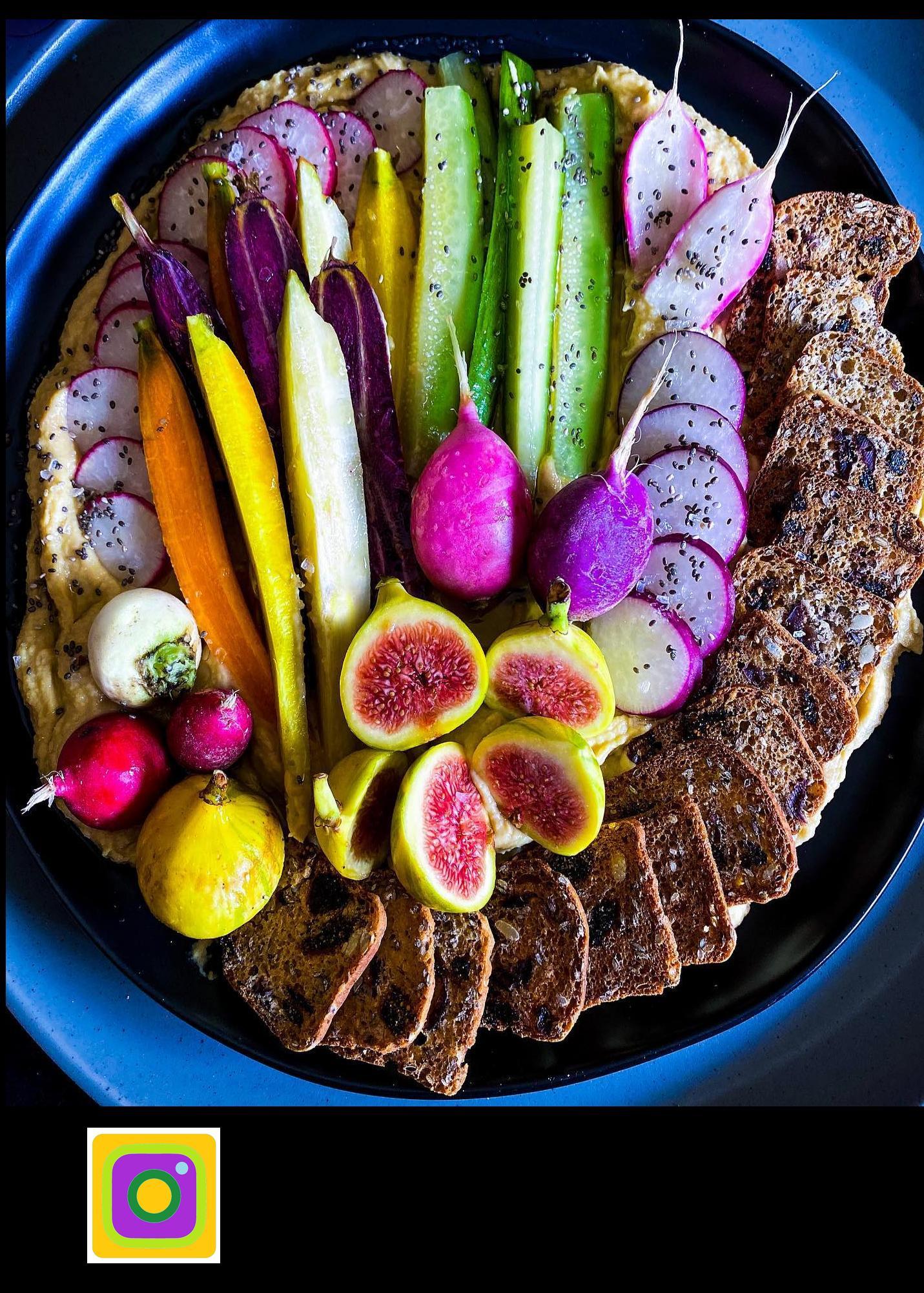























H. Luiz Martinez
I am so delighted to bring you EYC’s most-ambitious issue. It’s a two-month issue and it is jam packed with all great things of and in PUERTO RICO.
Both of my Parents are from Mayaguez en el Mani and I’ve been travelling to the Island since I was 4 years old. I remember very fondly believing that Puerto Rico was Heaven because you had to take a plane to the skies to get there. My family would ask, where is Puerto Rico or where does Mami (my Grandmother) live? I would close one eye and point towards the clouds.
First of all, a big hello to all the Women. Although it is Internationally celebrated in March, I celebrate you daily365 days a year (including Leap Years, 366 days.) Your impactful contributions to the World and to my life are appreciated. Speaking of women, I celebrate Monique Casablanca, what she has done, is doing, and will do for herself, family, and for others- is incredible! Inside, there’s some insight of Saffra CoWork and how she’s changing that space. Monique Casablanca is an entrepreneur’s Entrepreneur. She’s amazing!
We take a deep dive into Bad Bunny’s new music. Like many of us, the music, lyrics, and social-political messaging just made me appreciate the Island more- and to do more for Puerto Rico!












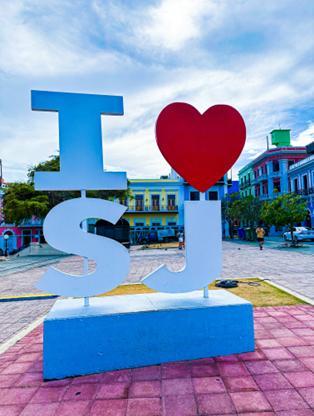








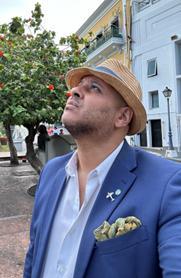


Women's History Month has its roots in International Women's Day, which was first celebrated in 1911. In the U.S., the movement gained momentum in 1978- a group of women in Sonoma County, California, organized a week-long celebration of women's contributions to history and culture.
This local event inspired other communities across the country to follow suit. In 1980, President Jimmy Carter declared the week of March 8 as National Women's History Week. The U.S. Congress passed a resolution establishing a national celebration the following year.
The National Women's History Project successfully petitioned Congress to expand the event to the entire month of March in 1987. Since then, every U.S. president has issued an annual proclamation designating March as Women's History Month.
Today, Women's History Month is celebrated not only in the United States but also in other countries, including Canada, Australia, and the United Kingdom. The month-long celebration honors the contributions, achievements, and struggles of women throughout history, from suffragists like Elizabeth Cady Stanton and Susan B. Anthony to modern-day trailblazers.
“Personally and Professionally at EAT YOUR COLORS magazine, we honor and applaud women. Thank you for all that you do and everything that you do- not only to enrich my life, but to enrich others and the world. I love women!!”


One of the greatest Latin Hip Hop/Freestyle/Pop Divas to come out of the 1980's music scene is the legendary Lisa Velez also known as Lisa Lisa of the 80's supergroup Lisa Lisa & Cult Jam. Lisa recently collaborated with A&E Lifetime to executive produce her very first biopic- February 2025. The story is based on her beginnings and triumphs in the music industry in the mid 1980’s.
Can You Feel The Beat: The Lisa Lisa Story!
Most of you know by now that I cannot go to beautiful Puerto Rico without visiting Viejo San Juan. I really enjoy historic cities: Vieux Carré (French Quarter, New Orleans), La Zona Colonial (Colonial City/ Zone, Santo Domingo, DR), Sitges (Spain) and Cartago (Costa Rica). But Old San Juan has a timeless charm- all of its own.




Old San Juan is a treasure trove of Spanish colonial architecture, rich cultural heritage, and warm Caribbean hospitality. Here are some reasons why you should make Old San Juan, your next vacation destination.

As you wander through the cobblestone streets of Old San Juan, you'll be surrounded by some breath-taking architecture of the New World. The district's iconic colorful buildings, adorned with ornate balconies and facades, will transport you back to the 16th century.
The cobblestones appear blue in color because a waste product called slag (left over debris) was used to create them. The color happens over time due to exposure of the elements and moisture.
Old San Juan is a city steeped in history and culture, with lots of museums, landmarks, and historical sites to explore. Visit the famous El Morro fort, a 16thcentury citadel that offers breathtaking views of the San Juan Bay. Discover the vibrant art scene at the Museo de Arte de Puerto Rico, or delve into the island's rich history at the Casa Blanca Museum.




Old San Juan is a foodie's paradise, with a diverse array of restaurants serving up delicious Puerto Rican cuisine, from traditional dishes like mofongo and arroz con gandules to innovative fusion cuisine. After dark, the city comes alive with a vibrant nightlife scene, featuring everything from trendy bars and clubs to intimate jazz clubs and live music venues. In fact, hanging out in the street, talking to locals and tourists can be lots of fun too. Bring your smiles!




One of the best things about Old San Juan is its accessibility. Luis Muñoz Marín International Airport is just a short drive away, maybe 25-30 minutes tops? It’s 10-12 minutes away from the Condado area of San Juan. I usually stay in that area while in Puerto Rico.
Old San Juan itself is quite easily walkable too. The historical site are within blocks from each-other and the restaurants are not only pretty authentic, but inexpensive as well.


Old San Juan is a beautiful city, but it's also a beach lover's dream destination. Enjoy the sun, sand, and surf at Playa Escambrón, a beach surrounded by towering palm trees and crystal-clear waters. If outdoor fun is your thing, there are plenty of opportunities for kayaking, paddleboarding, and snorkeling in the nearby San Juan Bay. Cruise ships typically dock in nearby Old San Juan Piers.
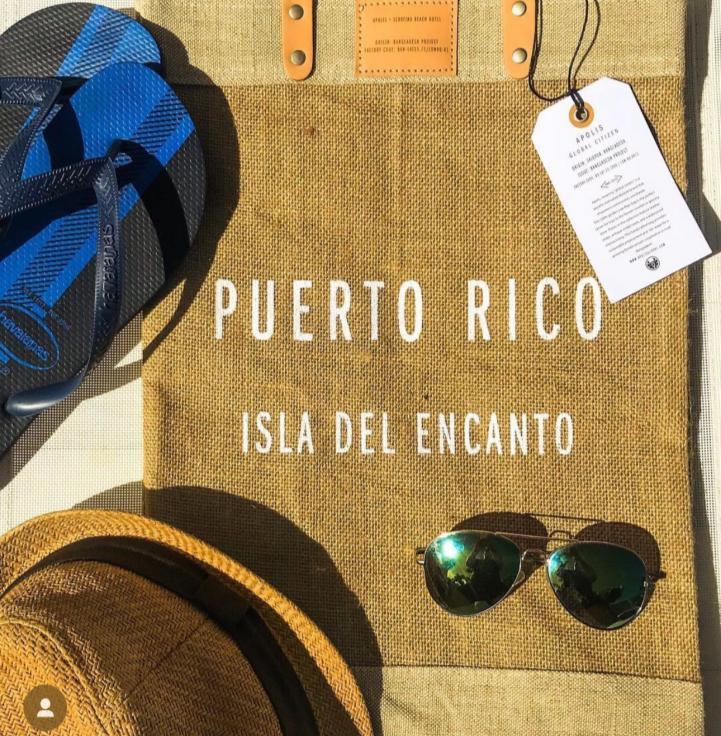
Viejo San Juan, Puerto Rico, is a vacation destination that has something for absolutely everyone. Whether you're a history buff, a foodie, a Night Owl, or just looking for a relaxing beach getaway, this captivating city is sure to leave you enchanted. So why wait? Book your trip to Old San Juan today and discover the timeless charm of this incredible Caribbean destination! Tell them H. Luiz sent you!
I like to fry a batch of large, crisp, tostones. There’s nothing quite more Caribbean than fried plantains, right?
The starchy, green plantain is such a staple in Puerto Rican cuisine. In some Caribbean homes, it competes with another starchy food- rice.
I grew up in my family home eating tostones at least 3-4 times a month. As a side dish along with rice for meat dishes, as a snack like chips, and/or cut up like long French fries.
When I started cooking as a young adult, I elevated tostones (or at least I think I did) to fit my style of cooking. I like to serve mine like tortilla chips with my shrimp ceviche. I fry them in very long French-fry like strips and dip them in a raw garlic aioli. I’ve made tostone cups filled with crab-salad or ensalada de pulpo (octopus salad).
But the way I most-frequently prepare my tostones is to top them with an avocado mash, slices of juicy pork belly, and a sprinkling of cilantro or micro-greens on top. If not greens, a flat salad of cucumber, radish, and carrot slices will do nicely- thank you.
Here’s how I make them…
Get the greenest plantains you can find. Ripe green plantains are a must for great-tasting tostones.
Peeling the plantains is not hard but it’s tricky. Cut off both ends of the plantain first, then gently slice down the entire length along the seams with the tip of your knife. Do not slice too deeply- just the skin.
* Cut the plantains into 1” thick pieces. You can go big or small. I go big. I get 4 large ones per plantain.
* Fry the pieces in warm oil until they are golden- about 5-7 minutes.
* Take out the pieces onto a paper towel, let any excess oil drip off.
* While the plantains are still warm, I stand them up and take a small dish and gently smash down on top of it onto my cutting board.
* Crisp up the circular plantains in hot oil- 2 minutes per side.
* Sprinkle with salt while they're still warm, so the salt sticks. And just like that, you're ready to top them (or not), serve and enjoy!
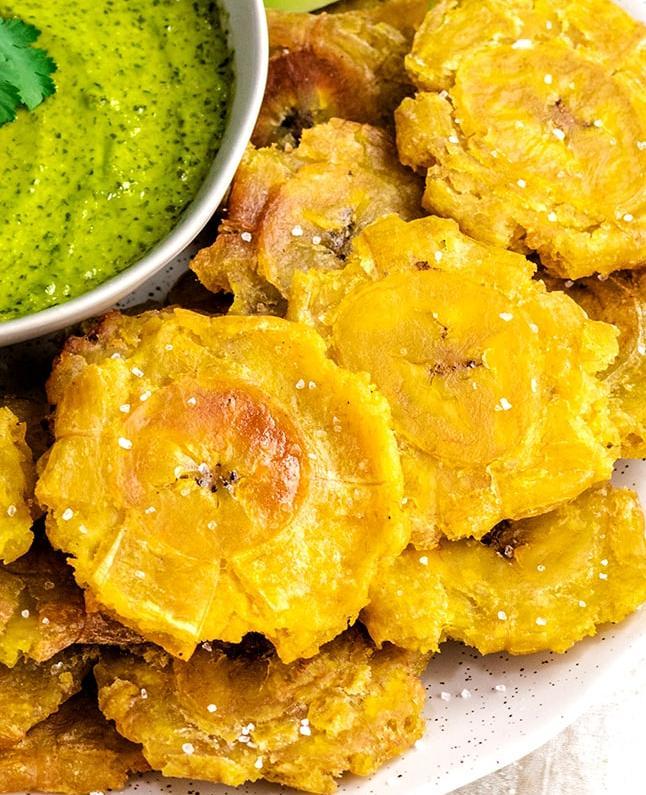



The Flag of Puerto Rico has been created, adjusted, reclaimed, and currently politicized since 1493. Initially, Christopher Columbus used the Royal Flag, and his captains used two flags which the Admiral carried in all the ships as Ensign (a flag or standard, especially a military or naval one indicating nationality.)

The flag of Castile and Leon was the official flag of the Spanish autonomous community of Castile and Leon. It represented the two cultural identities who share this administrative region, the Castle for Castile, and the Lion for Leon. It consists of the quartered coats of arms of Castile, represented by a castle, and Leon, represented by a lion. Kingdom of Castile Flag (1248 - 1516)
The white flag with a green cross in the middle and a green crowned 'F' and a green crowned 'Y', both with golden, open royal crowns- representing King Ferdinand II of Aragon and Sicily, and Queen Ysabel (Isabel I) of Castile and Leon was used in 1492.
This flag was used to distinguish the ships under Columbus' command as they sailed to the NEW WORLD.
It was rumored that during this time, a flag posted upside down represented trouble. If that were to be the case, the stylized bottom portion of the “F” would still read first and the stylized “Y” would read second. Man before Woman at its finest, even if there seems to be trouble.

This flag was flown over Spain’s colonial empire in the New World until 1785, when a new flag was adopted. The Saltire (cross) design resembles two crossed, roughly pruned branches., known as the Cross of Burgundy, was a symbol of Philip I, Duke of Burgundy and father of Charles I, who became Spain’s King in 1516.

This flag flew wherever there was a Spanish military installation, including a Fortaleza, Fort San Felipe del Morro, Fort San Cristobal and San Geronimo. The Cross of Burgundy flag still flown alongside Puerto Rico and U.S. flags at Fort San Cristobal and Fort San Felipe del Morro. The Forts still stand today and is a popular tourist attraction.
For nearly a hundred years (92 to be exact), the Arms of BourbonAnjou were added in 1700 when Philip V became king of Spain. According to reports, some thought that it was a mistake when they saw that the new flag was off-centered.

Philip I introduced several changes on the royal arms and the flag was reduced to white with an off-center crowned Royal coat of arms. The flag was flown in fortresses, castles and coast defenses.
The Grito de Lares flag was used on September 23, 1868 during the uprising in Puerto Rico against the Spanish government. It was designed by Dr. Ramon Emeterio Betances and embroidered by Mariana Bracetti- it was intended for this flag to become the flag of the Republic.
The flag's layout honors its deep connection to the Antillean Confederacy and nationalists in the Dominican Republic.

Spain
(1793-1873, 1875-1898)

In 1785, King Charles III replaced the existing flag with a new, distinct ensign which could not easily be mistaken with those of other countries.
In 1843, it also became the official Spanish State Flag. This flag is still used today as a Spanish national flag with the Royal Shield replaced by a more modern coat of arms.
In 1873 Spain was declared a Republic. The First Republic's flag was similar to the Royal flag of 1785. The only thing different was that the crown was removed. The new Spanish Republic and flag was short-lived, it only lasted between February 11, 1873, and December 29, 1874- less than 2 years.


This flag of Puerto Rico was designed in 1895 to promote the idea of Puerto Rican Independence from Spain. It consists of five alternating red and white horizontal stripes with a single white fivepointed star- resting in a sky blue triangle.
The three red strips symbolized the blood from the brave warriors, the two white stripes- victory and peace after obtaining Independence. The blue is for the sky and sea and the white star is of course, represented the island itself. The design was modeled after the Cuban flag but with the colors inverted. This is a much sought-after flag.
When Puerto Rico became an American territory, the Puerto Rican flag was outlawed until 1952- the US Government came up with a new flag. But this sky blue flag is the one I grew up with- hidden by my parents 20 years before I was born. Soon after the Cuban Revolution (1953-1958) US officials on the island became suspicious of those displaying the flag, considering them subversives.


Then, in 1952 when Puerto Rico became a commonwealth, the flag was officially adopted, but it symbolism was altered to distance the flag from its history. The color blue was changed to a darker tone to make it more similar to the American flag’s blue tone.
In 1995 the triangle color blue was changed to a lighter blue. The shade is not as light as the original one of 1892, but it was seen as a way to reassert the flag's historical symbolism associated with independence movementsa sort-of an olive-branch, if you will.

Back in 1954, Ramón “Monchito” Marrero created the popular vacation cocktail, the Piña Colada, while bartending at the Caribe Hilton in Viejo San Juan, Puerto Rico. The Caribe Hilton still proudly stands and is located on Calle San Gerónimo in Old San Juan.
As the story goes, Tio Monchi (he probably was an Uncle of mine, distant or otherwise jajaja) wanted to capture and blend the flavors of The Island and offer something special for his guests. He blended white Puerto Rican Rum (I use Bacardi but Don Q, the top-selling rum from Ponce, PR is a classic), sweet coconut cream, pineapple juice and crushed ice to create the world’s first Piña Colada.
The delicious cocktail became very popular with tourists and locals. In 1978, nearly 25 years later after he perfected it, Ramón “Monchito” Marrero’s Piña Colada was named Puerto Rico’s national drink. Ramón Marrero continued to serve Piña Coladas at the Caribe Hilton in Viejo San Juan, Puerto Rico until 1989.
My Piña Colada Recipe has a major difference from the original recipe- I use organic coconut cream (which is just organic coconut and water) and not cream of coconut (which is super sweet and filled with additives I do not want). Coconut cream is unsweetened so I can control the amount of cane sugar or honey that I use without all those additives.
Ingredients
• White Rum (the original recipe uses Gold or Dark rum)
• 12oz of Coconut Cream (original recipe uses Cream of Coconut)
• Fresh Pineapple chunks or Pineapple Juice
• ¾ cups of Cane Sugar (omit if using Cream of Coconut)
• Lots of Ice
• Pineapple to garnish
Place all the ingredients with the quantities that YOU like and blend it until smooth and frothy. Serve very cold!
that in Puerto Rico, each municipality (town or city) has its own flag? All 78 regions also have their own coat of arms and anthem too, which are symbols of identity, history, and culture.


As a symbol of identity, community, and heritage, the flags of Puerto Rico's 78 municipalities are more than just colorful emblems. They represent the very fabric of the island's culture and the pride of its people.
In an era where globalization threatens to erase local traditions, Puerto Rico's municipal flags stand as a testament to the importance of preserving unique identities. Each flag, with its distinct design, colors, and symbolism, tells a story of the municipality's history, customs, and values.
These flags are not just mere decorations; they are a source of community pride and unity. They fly high at town halls, public events, and private homes, serving as a reminder of the municipality's autonomy and individuality. Moreover, the flags promote a sense of belonging, civic engagement, and they inspire community spirit, that fosters connections among the people.
In an increasingly interconnected world, Puerto Rico's municipal flags are a beacon of local pride and cultural heritage. They remind us that, despite differences, they are united in their love for the island and its rich traditions. As we move forward, it is essential that we continue to celebrate their symbols of identity. Let’s honor the history and culture behind each flag, and let us continue to see them fly high with pride.
¡Viva Puerto Rico!
"Discover the fascinating stories and meanings behind the individual flags of Puerto Rico's 78 municipalities“
As we wave our flags high, we wave our identity, our culture, and our resilience. In Puerto Rico, municipal flags are more than just symbols of civic pride; they represent the distinct character, history, and traditions of each of the 78 municipalities- cities and towns.
From the sun-kissed beaches of Aguadilla to the misty mountains of Jayuya, every municipality boasts its own unique flag, carefully crafted to reflect the community's values, struggles, and triumphs. These flags are not just decorative elements; they embody the essence of the island's tapestry.

I would like to credit Giovanni Lozada of ESCENA FILMS, inspiring the research: Municipal Flags of Puerto Rico

Take, for instance, the flag of Ponce, proudly featuring the Lion of Ponce, a symbol of bravery and strength. This majestic emblem pays homage to the city's rich history, from its indigenous Taíno roots to its Spanish colonial past. Each flag tells a story, weaving together threads of history, mythology, and community spirit. The flag of San Juan, with its imposing castle and majestic eagle, proudly proclaims the capital city's status as a stronghold of Puerto Rican culture and resilience.
As we celebrate Puerto Rico’s municipal flags, we celebrate diversity, creativity, and unwavering pride in the island's heritage. Whether you're from the bustling metropolis of Bayamón or the picturesque town of Luquillo, your municipal flag is a badge of honor, a symbol of belonging, and a reminder of the unique qualities that make your community special. Let’s wave those flags high, with pride and joy, and let the world know that Puerto Rico is a vibrant tapestry of municipalities, each with its own distinct character.
*On the following pages, you’ll see all 78 beautiful municipal flagscomprising the heritage of our beloved Puerto Rico. ¡Viva las banderas!


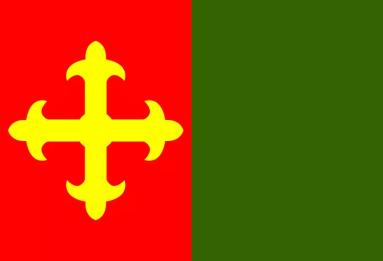









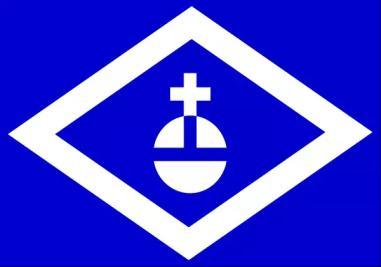
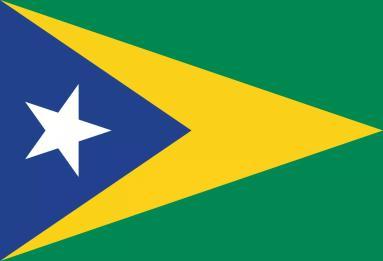


















Añasco Arroyo Barceloneta Barranquitas






Cabo Rojo Camuy Cataño







Corozal Culebra Dorado Florida















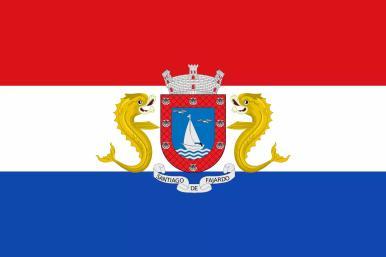

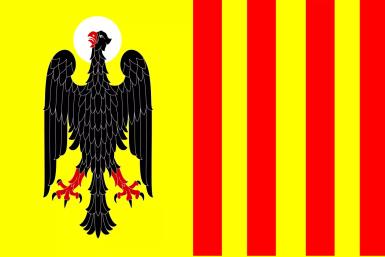









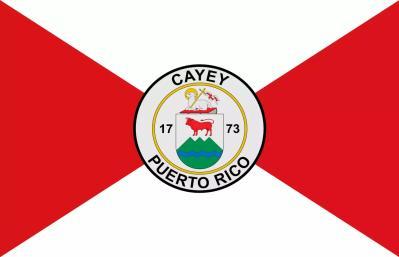










Caguas Canóvanas Carolina Cayey



Cidra Fajardo Guayama


Sabana Grande



Juncos Lajas Loíza Luquillo




Maunabo Morovis Naguabo Orocovis




Ponce Quebradillas Río Grande San Germán




Trujillo Alto Utuado Yauco Juana Díaz









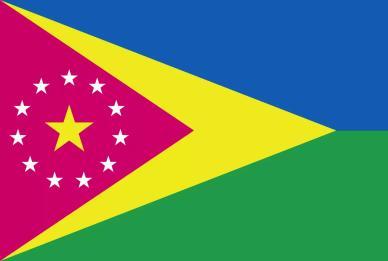










































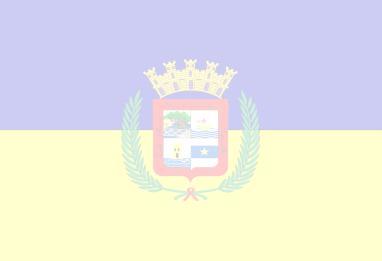

Empanadillas are small, half-moon-shaped savory pastries, similar to Latin American empanadas, that can be filled with various ingredients like meat, cheese, or vegetables, and are often fried or baked.
Empanadillas have a long history and are found in many cultures, with variations in dough and fillings.
The dough is typically made from flour and can be baked or fried. Most folks I know just buy a bag of dough discs- usually 10 in a bag.
Common fillings include ground beef, chicken, pork, cheese.
Let me show you how I make them…
* Use Empanada Dough Discs for Turnover Pastries (or make your own)
* For the filling (picadillo):
• olive oil
• diced yellow onion
• diced red bell pepper
• sofrito
• ground beef (lean)
• homemade sazon seasoning
• adobo seasoning
• bay leaf (make sure you remove)
• tomato sauce
• sliced pimento stuffed olives
• water
• salt (I use Kosher salt)
• cilantro
* Assembly: Place a spoonful of filling on each dough disc, fold over- seal the edges with a fork
* Cooking: Fry or bake the empanadillas until golden brown.





I’ve heard these called all kinds of names. My Mami called them empanadillas but some of her sister (my Aunts) called them pastelillos or empanadas.
*People do get riled up over it.

Bad Bunny’s new album, "Debí Tirar Más Fotos” addresses themes of gentrification, colonialism, and the struggles faced by Puerto Ricanssparking conversations and raising awareness about the challenges the Island faces. Bad Bunny truly has become a voice for Puerto Rico.

Bad Bunny's music has had a real profound impact on Puerto Rico- serving as a powerful voice for economical, social, and political issues. Simultaneously, it also showcases the island's culture and resilience. Bad Bunny’s unique blend of genres, unapologetic lyrics, Puerto Rican slang, and commitment to his roots, are beacons of hope and pride for Puerto Ricans. Let me attempt to breakdown some of the songs and share with you what I feel that Benito “Bad Bunny” Martinez Ocasio (is that my cousin?) is saying. Of course, the music has had an effect on lots of us, but the social-political messaging in the songs are undeniable. That’s what makes it so impactful. But first, let’s get into that album cover- those white plastic chairs.

The album’s cover, features two white plastic chairs- a staple of working class families. It also represents a lot of people, including Puerto Rican families living on and off the island. These chairs symbolize nostalgia for home. Those moments of having an overflow of family coming over- bring out those chairs. Maybe it was just two chairs for a couple of friends to have a private moment para hablar en serio.
But then I thought, those empty chairs on the album cover could also signify the people who have left their homelands for other opportunities. Those empty chairs can be a reminder of what was left behind- the home, the family or maybe even a part of cultural identity. Maybe, that’s just how I felt about the cover. Yes- this album and thus this article is going to run deep.
Bad Bunny raps a line about a woman very familiar to me. He says, “A shot of rum at Toñita’s house and Puerto Rico feels so close.” I knew right away that he was talking about Maria Antonia Cay- better known as Toñita and her iconic Caribbean Social Club in Brooklyn. My Parents were good friends and supporters of Toñita’s Caribbean Social Club. It was a gathering place where a newcomer to the City can find their relatives- Toñita knew everybody.

Toñita’s is more than just a bar—it’s a symbol of connection. For many Puerto Ricans in New York, Toñita’s is a safe haven where culture, food, music, and memories come alive. When Bad Bunny mentions Toñita, he’s showing us how cultural spaces in the diaspora may help people stay close to their cultural roots.
“Un shot de cañita en casa de Toñita y PR se siente cerquita”
Bad Bunny mentioning rum at Toñita’s is more than just about a drink- it’s a way to feel connected to the place he came from, even in a foreign space. To me, this shows how important it is to have cultural landmarks in a big city like New York. Without them, it’s easy to feel lost. Bad Bunny reminds us that no matter where you go, your culture stays with you through the people, places, and traditions you hold close.
“Shh, cuida'o, que nadie nos escuche, Shh, cuida'o, que nadie nos escuche”
Shh, careful, don’t let anyone hear us- this line is so different from the rest of the song. It’s quiet and intimate, almost like Bad Bunny is stepping away from the party for a moment to share something personal. In a song that’s mostly about celebration, this line shows us another side of him—more private and vulnerable. Bad Bunny uses a sudden shift in tone to catch the listener off guard. It’s a reminder that even in moments of joy, there’s always something deeper happening beneath the surface.
The first half of the album, of course contains references to social and political elements of Puerto Rican culture, but I’d like to start with the song “Turista” (track 11). In the ballad of course, Bad Bunny sings about his feelings of love lost, while subtly paralleling it to mass tourism. The political context is not so in your face- you have to dig deeper beyond the words.

“En mi vida fuiste turista, tú sólo viste lo mejor de mí y no lo que yo sufría. Te fuiste sin saber el porqué, el porqué de mis heridas, y no te tocaba a ti curarlas. Viniste a pasarla bien, y la pasamos bien"
It translates to- “In my life, you were a tourist. You only saw the best of me and not when I was suffering, you left without knowing the reason for my wounds, they weren't yours to heal. You came to have a good time, and we had a good time.”
It reminds me of an article I wrote years ago in another publication. I wrote that most of us travel to other regions “to have a good time” but couldn’t care less about the area/ people we’re visiting. We don’t think about what they are going through. All we care about is if they make a mean piña colada and if the Boyz are cute.
Many go to Puerto Rico to have a good time, unaware of the battles locals are fighting and the problems they are facing. This is the reason why I’m a proud Activist. If a Country, Island, or Region gives you a good time, give back in any way you can- even with your very own hands, if possible.
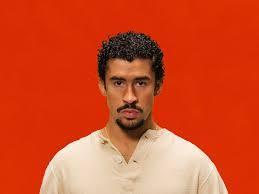
The most politically charged song in the album is “LO QUE LE PASÓ A HAWAii.” The song starts off with Bad Bunny saying that this was about a dream he’s had about Puerto Rico. He describes the Island- “She looks so pretty even though she's doing badly… Her eyes smile but they are holding back tears… Her foamy shoreline looks like Champagne, but it’s just alcohol for her wounds, there’s so much pain to heal.” And that’s just the first few lines. By the second verse, he talks about the jibarito that did not want to leave the Island but corruption (government) pushed him out to Orlando. Those lines speak of gentrification and the displacement of Puerto Ricans. Though the majority of the Puerto Rican diaspora resides in New York, Orlando has also been a main migration destination for Puerto Ricans since the 1900s, with many jíbaros moving under sponsored agricultural programs. 10 years ago or so, the number of Puerto Ricans living in Florida had surpassed 1 million due to Puerto Rico’s economic recession forcing people to seek work in the mainland (Pew Research Center, 2015). After Hurricane María hit in 2017, the worst in Puerto Rican history, The New York Times reported that 168,000+ people had landed in Florida from Puerto Rico, escaping not only the immediate aftermath but the political climate and “el corrupto” - perpetuated within the government and outside forces.
“Quieren quitarme el río y también la playa, quieren el barrio mio y que Abuelita se vaya- no, no suelten la bandera, no olvidan el ‘le lo lai’ que no quiero que hagan contigo, lo que le paso Hawaii”
Translation: They want to take the river and the beach away from me (refers to the many outside investors buying property on the island.) They want my neighborhood and my grandma gone (Bad Bunny later changes it to They want your children to leave) no no don’t let that flag go, don’t forget the ‘le lo lai’ (refers to a popular scat/ refrain in lots of songs from Puerto Rico), I don’t want them to do to you, what they did to Hawaii. This directly alludes to 1893, when the Kingdom of Hawaiʻi was illegally overthrown by the US Government. In 1993, President Clinton signed legislation apologizing for the U.S. role in the 1893 overthrow of the Hawaiian monarchy. But the apology does not provide federal recognition to Native Hawaiians as provided to Native American tribes
People are starting to hear DtMF with feelings and memories of those who left too soon, a relationship that fizzled too quick, and/ or missed moments of one’s childhood. But the song also has sentiments that can serve for those who may have been forced to move out of Puerto Rico to pursue other opportunities but still long to return.
“Another beautiful sunset I see in San Juan. I'm enjoying all the things those who ‘leave’ miss. I should have taken more photos- when I had you.”
“I wish my people would never move." That line means so much to me personally. I call my real close friends and family in Puerto Rico, Dominican Republic, Mexico, Costa Rica and here in the United States “Los Mios.” When Bad Bunny says it and adds that he loves the Hell out of them for real, thanks them and says that it is important that they are there on the Island with himhe’s actually hoping that outside circumstances will never force his loved ones to leave the island.
The song La Mudanza is highly personal yet still infused with social-political commentary. Bad Bunny starts off telling us about how his parents met while his father was helping someone with a move hauling furniture. He thanks his parents for all that they have done for him. Bad Bunny is so grateful.
“They killed people here for waving the flag, that's why I bring it anywhere I want now."
The verse refers to Law 53 of 1948, better known as the Gag Law or la Ley de La Mordaza. Signed by Jesús Piñero, the law aimed to suppress the independence movement and to criminalized the ownership and display of the Puerto Rican flag. But in 1957, it was finally declared unconstitutional for violating Freedom of Speech, a right protected by Puerto Rican and U.S. constitutions.

“Pongan un tema mío el día que traigan a Hostos”
Bad Bunny references Eugenio María de Hostos y de Bonilla- a scholar, lawyer, and advocate for Puerto Rican Independence. Hostos died in the Dominican Republic in 1903 and is buried in the National Pantheon of Santo Domingo. His last dying wish was to have his remains returned to Puerto Rico when, and only when, Puerto Rico is granted full Independence. Bad Bunny then goes on to say,
“If I die, I hope you never forget my face and that you play one of my songs when they bring Hostos back.”
Immediately after referencing Hostos and with the analogy of his own death, Bad Bunny references his coffin “caja” adorned with the Puerto Rican flag, but with the light blue color “azul clarito.” Of course, that’s a direct reference to the original Puerto Rican flag that featured a sky blue color. This was later changed to navy blue (1948) to resemble the U.S. flag more. It was changed back to light blue in 1957. To this day, the Puerto Rican flag with light blue color is preferred by those who are pro-Independence.
“En la caja la bandera azul clarito”

The outro for the song summarizes Bad Bunny's feelings about the Island, and how most Puerto Ricans’ feel as a whole. Nobody can take me out of here, I'm not going anywhere. Tell them this is my house, where my grandpa was born. I am from P f*cking R.
“De aquí nadie me saca, de aquí yo no me muevo”

Throughout "DTMF", Bad Bunny tackles a very wide range of social and political issues and constraints, from government corruption, economic inequality to feminism and LGBTQ+ rights. Bad Bunny’s new studio album is really a call to action, a reminder of the resilience and strength of Puerto Rican people.
Throughout the tracks in the album, Bad Bunny paints a picture of Puerto Rico for those who call it home and for those who long to return. He taps into the rhythmic sounds of the island with salsa, plena, bomba, and yes- reggaeton. Bad Bunny incorporates samples of well-known Puerto Rican artists from Gary Núñez and Héctor y Tito to El Gran Combo de Puerto Rico and Andy Montañez. DeBÍ TiRAR MáS FOToS is more than just an idyllic postcard; it is also an act of activism and cultural reclamation of Puerto Rico.
"DTMF" is not just a collection of songs; it's a love letter to Puerto Rico. Bad Bunny proudly showcases the island's rich cultural heritage, from its vibrant music and dance to its stunning natural beauty. This celebration of Puerto Rican culture is not limited to the music itself; the album's visuals, including striking music videos and artwork, are also rooted in the island's aesthetic. A sense of awareness and deep pride resonates with Bad Bunny’s new music.
Bad Bunny’s DtMF is a powerful reminder of the importance of standing up for what you believe in. He’s quoted as saying that he wanted this album, DtMF to be a history lesson for not just the World but for Puerto Ricans, on and off the Island.
As Bad Bunny continues to break down barriers and push the boundaries of what is possible, one thing is clear: he is a true leader and a shining star.

When Puerto Rican artist Bad Bunny announced his first-ever residency on the island, the news highlighted more than just his global success. It emphasized the island’s vibrant and thriving creative economy.

Reports show that Bad Bunny’s Residency, will have an economic impact, estimated $200 million with 30,000 hotel room nights expected, and $25 million in media value. This will promote Puerto Rico the as a top-tier destination.
The No Me Quiero Ir de Aquí is proof how Puerto Rico’s creative industries can serve as powerful engines of economic growth while elevating the island’s profile.
“No me quiero ir de aquí” (I don’t want to leave here), this 30-show residency at the Coliseo de Puerto Rico has captured global attention. It showcases Puerto Rico’s capacity to host large-scale, worldclass cultural events as well as its influence on the global economy. But this residency isn’t just about music. It’s about the future of Puerto Rico’s economy.

The demand for Bad Bunny tickets (400,000 sold within four hours, half to international tourists) demonstrates the residency's global appeal and its potential to enhance the Puerto Rican economy. Thanks to Bad Bunny’s music, the residency is seen as a way to promote the island’s culture, during a time when some residents are facing displacement due to gentrification. The event is expected to bring thousands of visitors to the island- boosting tourism.
Tucked away in the beautiful city of San Juan, Puerto Rico, lies the iconic arena of “EL Choli” - the Coliseum of Puerto Rico.
The Coliseum of Puerto Rico, a venue stadium that has been entertaining audiences for over 40 years, has played host to a dazzling array of events. Anywhere from sold-out concerts, sports matches, award shows and cultural festivals- El Choli (as it is affectionately called by locals) has hosted it all.
The Coliseum of Puerto Rico officially opened its doors on September 29, 1965, with a spectacular inauguration ceremony, featuring none other than legendary Puerto Rican singer, Daniel Santos. This glamorous debut set the tone for a venue that would soon become synonymous with excellence.



Over the years, the Coliseum of Puerto Rico has established itself as a versatile and sought-after destination for a wide range of events. From thrilling sport games and matches to amazing concerts by world-renowned artists like Marc Anthony, Ricky Martin, and Shakira, the coliseum has delivered unforgettable experiences for international audiences.
Now, It will host its 1st time Residency, Bad Bunny’s No Me Quiero Ir de Aquí concert dates. The new tour dates start with exclusive dates for Puerto Rican residents and later open up for international visitors. The Puerto Rican residents dates were all sold out within hours. Residency dates for non-locals start Aug. 1 to 3, Aug. 8 to 10, Aug. 15 to 17, and Aug. 22 to 24, Aug. 29 to 31, Sept. 5 to 7, and Sept. 12 to 14.
*Get your tickets fast because they are selling out!

We no longer eat/ buy processed meats (ground beef, sausage or pork)there go my meatballs. So I had to come up with an alternative because ground beef (and other ground meats) are quick staples to have that can quickly create tasty meals at home.
I knew that I didn’t want to use my meat-grinder (thanks KitchenAid but no thanks) because you really do have to add fat to make those pork or beef sausages taste good- plus the cost of cuts that I use (sirloin, brisket, etc.,) just would not make that economically sound.
I also didn’t want to buy ground alternative anything. I do not like the way they taste and some brands can cost even more than meat. So the best bet for us was for me to make my own ground meat alternative.
I came up with Ground Plant Protein or GPP (yeah you know me- jajajaja!)
On the following page, I show you exactly how I create GPP, all the ingredients and how I season the mixture. Tastes like ground beef as well.





Monique Casablanca is a trailblazing entrepreneur, though she may be too humble to acknowledge it. I have known about Monique since 2023, when she hosted my Prima, Omi Harper, with her family business- Casa Saffra. I already knew that Monique and her sister Bianca ran that business and that she and her family have other things brewing in Puerto Rico and New York City. I heard about her new venture, a work-share program, but had no idea how wonderful and different this new business venture was from your typical work share program.
Monique Casablanca was born in New York and raised in New York and in Puerto Rico. She was raised with lots of love and with a strong work ethic from her Puerto Rican parents. Being born a girl was no excuse to not get out into the world and achieve whatever it was you wanted- no matter what Society told you. With that mindset ingrained in her psyche, she set out to go for whatever interested her. That strong work-ethic, drive and passion are evident in her new business called Saffra CoWork.
Monique had this idea to create a place where like-minded people would come to work, encourage and motivate each-other, teach and learn from one another- inside an inspirational, beautiful, yet functional safe space. Ehhh, Ok. I know, it sounds like a wild dream or a Hallmark Movie of the Week, but I not only saw it, I briefly experienced it when I was in Puerto Rico last month. Monique was able to somehow piece together the compartments of her ideas into fruition into Saffra CoWork. I’m not totally sure if even she knows how she was able to do it. But, that’s the entrepreneurial spirit- figuring it out, as scary as it may seem, is part of the process. Not knowing is hardly a deterrent.

I met the entrepreneur, Monique Casablanca at the location of Saffra CoWork, a cooperative work-share program that she has founded in San Juan, Puerto Rico. But this is not your average work-share program, Saffra CoWork is a hub that offers entrepreneurs, sole-proprietors, freelancers, business owners, and artists- a space to work and grow. Monique and her dedicated team will ensure that the environment at Saffra CoWork will support such growth. The space is designed and curated with lots of inspiring art pieces, functional modern furnishings, and majestic plant life throughout- a beautiful backdrop for creative energy.
Saffra CoWork provides breakfast for all members, great coffee and snacks too. There are workshops, studio spaces, desk areas, private offices, lounges, conference rooms and so much more. My favorite spaces are the Zen, Peleton, Convention Center and Lactation (Pa Pumplar) rooms. And all of these spaces are wonderful. Take the lactation room, it goes the extra step. Most of those rooms that I’ve seen, no bigger than a closet, have a chair where you can just nurse your baby. At Saffra CoWork, the Pa Pumplar space has comfortable furnishings, a sink, and more importantly a fridge to store breast milk at safe and optimal temperatures. Monique and her Team thought of everything that will help one stay focused and on-task. Talk about inclusivity!
What really separates Saffra CoWork from other programs is the access to Community. Sure, you can work entirely on your own in this creative setting, but Saffra CoWork gives you access to like-minded peers. You’ll be connected to a real-life social network, that can provide guidance and/ or motivation.
Saffra CoWork has many different types of Passes and Memberships to suit your individual or group needs. Anywhere from Day Passes (my preference as a Traveler) to Yearly Memberships to Group Office spaces paid monthly. All passes and memberships come with breakfast, coffee, and snacks as well as use of other rooms and amenities. The best perk, however, is being around all the positive communal energy- you may even get to see Monique!

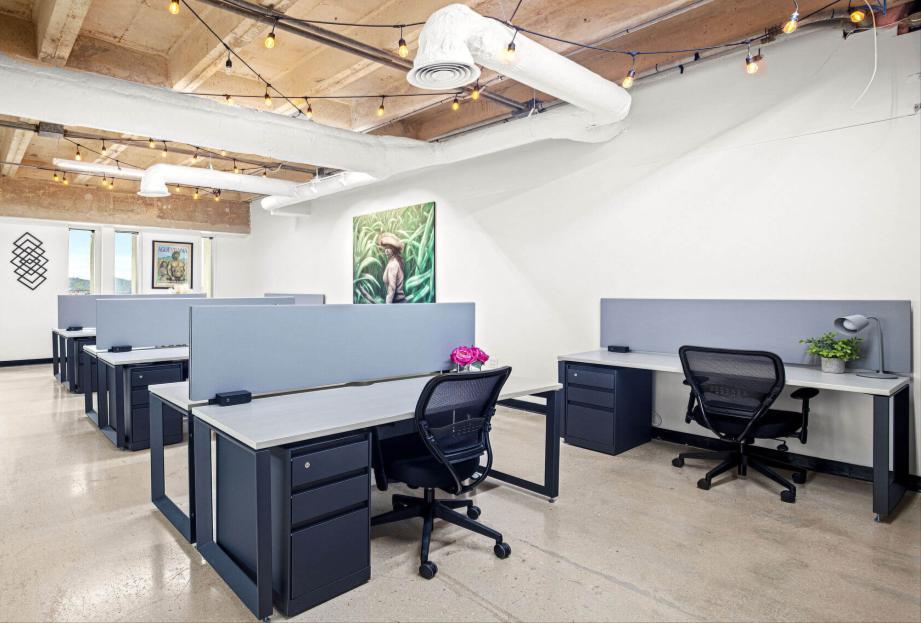
Saffra CoWork hub offers you the space you need for your entrepreneurial adventure, for your company, for your creativity to run wild and your mission to develop, to grow fiercely, and to expand unapologetically. With this flourishing era for solopreneurs, freelancers, remote workers and businesses emerging, our spaces invites you to concentrate on your tasks surrounded by artsy vibes; and a biophilic design on our venues that promotes wellbeing.
Where the freedom to do what you love and your passion thrives around people that share the same mindset. Dive into an experience where your unique work ethic and standards stand out.

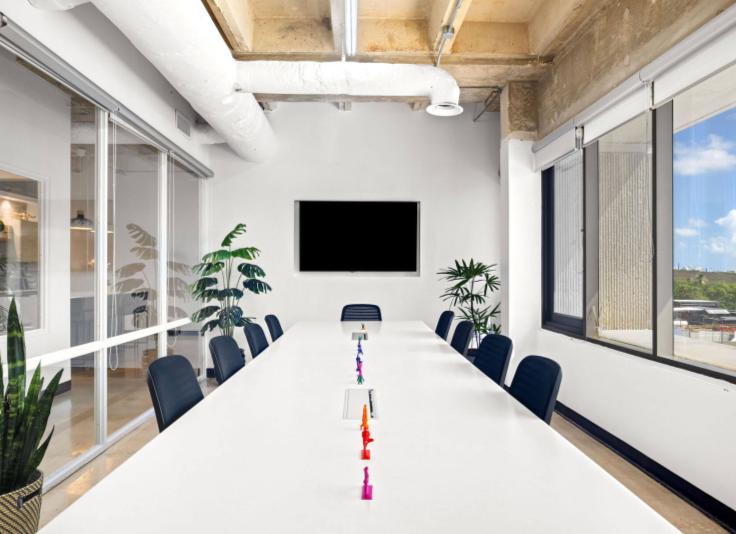

ILA San Juan 1055 Marginal Kennedy, San Juan, 00907








Walking through the beautiful cobblestone streets, one often stumbles upon a gem of a restaurant and thanks the pre-Colonial gods for the culinary magic one is about to partake in.
But that didn’t happen to me- nope… not at allnot this time! This time, Eduardo, my friend and manager of La O set me up to do a classic “H. Luiz Gastro Tour” with the ne restaurant.
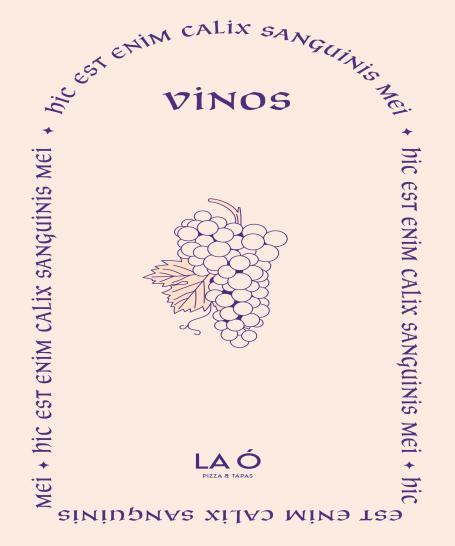
Eduardo knew that I would be in town and that I would be passing through Old San Juan at some point- as I often do. When I travel to Puerto Rico, I stay in San Juan- either in Carolina or San Juan (the Condado Area). Both Towns are located about 20 minutes from Viejo San Juan.
I just had enough time to do a mini-Gastro Tour sandwiched between two events I already had going on in Viejo San Juan. I was given a menu and was asked what I would like. I responded that my Gastro-Tour doesn’t work like that. The chef usually brings out 5 small sampling dishes of beef, chicken, seafood, vegan and dessert tastings. The goal is that we want travelers, “bride & grooms to be” and those celebrating special events to see just what the Chef can do and what can the restaurant offer.
“Nooooo- that’s not how this works.”
Then they said that they were not setup to cater weddings and that they do not cater at hotels for events AND didn’t I say that I was pressed for time and so I suggest a mini-Gastro Tour? Well, if they were going to put it that way, then yes- I guess!
Finally, we decided to just let the Chef come up with what he believed were the best dishes the restaurant has to offer. I begged them to please portion size because I didn’t want to get too full, just give me a sampling size. They responded with “Of Course!” The very next day, out came the PLATTERS!

As soon as I sat down, I was kindly asked which cocktail would I like. Cocktail? What did he mean?
“It’s early. Actually, it’s 1pm,” I said. “Oh- then Sangria it is.” And he scurried away. He returned with a goblet of classic Sangria. It was not too sweet and you can taste the fruit that was blended so well with the notes of the red wine. It was delicious! I liked the dehydrated lime slice too. It reminded me of my Christmas tree, jajajaja!
The octopus (pulpo) was nothing but perfection. The tamarind glaze underneath complimented the herbs that were grilled right into the pulpo. A squeeze of lime later, I was Heaven. The texture was like butter, pulpo can be rubbery when overcooked, but not this glorious piece of seafood. It may have been the best thing I’ve eaten on this media trip to Puerto Rico.
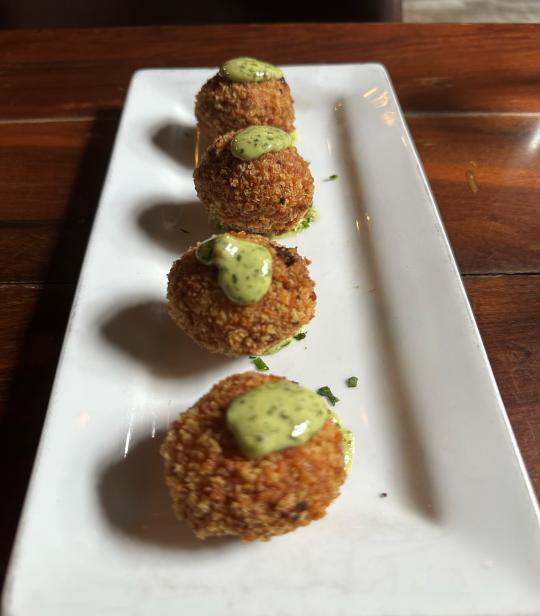

These beautiful croquettes are mushroom caps stuffed with a smokey chorizo and gorgonzola cheese. Underneath, was a bed of crisp onion bits and on top, that delicious cilantro-garlic aioli.
I normally comment that how on these Gastro-Tours, they serve large amounts of foods, even if I over-state that it should be small sample servings. However, I wish they sent me more of these stuffed mushrooms.

This beautiful piece of grouper was grilled with herbs and a butter glasse- so delicious!
The grilled grouper is served atop of their saffron risotto and a tangy tamarind drizzle on the side of the plate.
This heavenly dish is a winner!
I was so happy to see the Lamb ribs. I have a thing with lamb chops- I tend to order them whenever I see them. This time, they magically appeared!.
The beautifully cooked lamb ribs were served with rosemary and garlic on a cloud of well seasoned whipped potatoes. The drizzle of sauce on the side of the plate should be bottled ASAP.


The Garlic Shrimp were really out of this world. They were served with a not tooheavy cilantro and garlic aioli.
Underneath, their very tasty homemade pita rounds- so light and crisp!
These shrimp tapas are a must-have! When I return to Puerto Rico soon, no doubt I will venture to Viejo San Juanthese shrimp alone are enough to make me return to La O’.
Back in August 2023, I told you that the Department of Homeland Security (DHS) announced a phased enforcement plan for the REAL ID Act (as passed by Congress). The Federal Government will implement and start to roll out the REAL ID Act in a measured, fair, and responsible way. The date was pushed a couple of times but now the Federal Government is saying that on May 7, 2025- they are officially implementing the Real ID requirement for domestic air travel.
These (very delayed) new security standards of driver's licenses and state identification cards now have to meet in order to be used for federal purposes- including passing through airport security checkpoints. Think of it as a Passport for domestic travel- which incidentally, your US Passport (already a federal document) may be used for domestic travel too. The new requirements will be in place soon, but there will still be wiggle room for ID verification until full enforcement takes effect in 2027.
The REAL ID Act establishes security standards and prohibits federal agencies from accepting certain driver’s licenses and identification cards from states not meeting the Act’s minimum standards. The purposes covered by the Act are: accessing certain federal facilities, entering nuclear power plants, and boarding federally regulated commercial aircrafts (this affects travelers).
But you may already have a REAL I.D.
meaning they have worked with the Federal Government (I mean it’s been 16 years.) Real ID Driver’s Licenses will have one of the following markings on the upper top portion of the card. If the card does not have one of these markings, it is not compliant with the REAL ID Act:

My own license was expiring so I renewed it online- easy peasy. A few clicks, a couple of numbers, verify this, and confirm that. Press finished and print out your temporary card until your actual card is sent to you via mail. About a week later, my driver’s license comes and I’m super excited to get my “star” or maybe I was getting the bear (I didn’t know what my state of NJ was issuing.) I look to my upper left corner than my upper right- nothing.
But right underneath the words Auto Driver License, in all caps it read: NOT FOR “REAL ID” PURPOSES. Ehhhhh… what now? What’s going on here?
Turns out that if you renew your driver’s license online (in NJ anyway), you have to make an appointment at your local MVC and you have to bring your 6-pt identification markers. In some states you can just tick that you want REAL ID, and in other states, new driver’s licenses may have the star or bear marking on the driver’s license already.I’m just going to use my US Passport.
*REAL ID cards cannot be used for border crossings or other international travel.
For information on other acceptable forms for boarding aircrafts, visit TSA at https://www.tsa.gov/travel/security-screening/identification
visit the Department of Homeland Security FAQs for more REAL ID information

have invited me to Casa Sol for breakfast. I couldn’t believe it, from my own Casa Sol in New Jersey to thee Casa Sol in Puerto Rico. I’ve been trying to stay at Casa Sol Bed and Breakfast in Viejo San Juan for a couple of years now. They have much sought-after rooms (there are 5 in total) but soon, I’ll be walking through the doors of the 18th Century Spanish Colonial home. I want to show you all I saw and all that I have experienced, just being there, but I have to tell you in advance- Eddie, Margarita, and their dog Oreo are the real gems of Casa Sol. The open air courtyard (where they serve amazing breakfast dishes) and the beautiful space/ rooms are perfect gems too.

You all know by now, that I’m totally in love with my house- Casa Sol in Maplewood, NJ.
We bought our home about 3 years ago, after enjoying condo-life for nearly 20+ years. This was our first stand-alone home and so we wanted to name the house something special. We called it “Yellow Stone because of the yellow stones found out back. After 3 quick months of renovations, installations, and furnishings, we completely transformed the interiors. I outfitted our home to invoke feelings of warmth, joy, cheer, and peace. I wanted it to reflect our good energies, our vibrancy, and positive vibes. When we were done, it was Henry that pointed out- Yellow Stone just doesn’t feel quite right. I agreed. I took a deep breath and said- it should be “Casa Sol.” Henry smiled- it was indeed Casa Sol. It made us so happy and it’s been Casa Sol ever since. Then, while visiting one of my favorite historical cities, Old San Juan, Puerto Rico- walking along Calle del Sol, I noticed a beautiful Spanish Colonial house. It was so cheerful and bright. The property just spoke to me and so I had to look it up. I quickly found out that it was a Bed and Breakfast and it was called CASA SOL. Can you believe that?
Visitors were enjoying this Casa Sol for over 12 years.

Eddie Ramirez and Margarita Pastor are the proud proprietors of Casa Sol- the 1st and only true Bed n Breakfast in all of Viejo San Juan.
With their combined experience in hospitality and design, they transformed the 18th Century dwelling into a Travelers’ dream.


Casa Sol BnB is an exquisite Bed n Breakfast in the Heart of Viejo San Juan, Puerto Rico.
I stopped in for a visit to get a sense of what all the positive buzz, comments, and feedback all over the internet, we’re really all about.
The first thing that I’ve noticed while walking to Casa Sol, is that many of the attractions that Old San Juan has to offer is within walking distance. That’s a big plus. And since the Hosts, Eddie Ramirez and Margarita Pastor live on the property, they can guide you to all the best places to dine and attractions to see.

The 18th Century Spanish Colonial home took years to restore to the grandeur that it is today. Margarita Pastor, known as Tisha, became so proud as she spoke about the renovations. She showed me the tops of thick reclaimed wood (the bottoms were too damaged to use) that were repurposed into smaller support beams within the rooms. The wooden hulls (bottom of boats that give it buoyancy) found on the nearby ocean floor were transformed into the very thick doors of the 5 distinctive rooms. They were incredible to touch and feel- so strong those doors. The couple also made sure to show me the keys that opened those rooms- they all had a carved piece of charm as individual keychains. Casa Sol has magnificent artwork and artifacts throughout the home too. The furnishings throughout have the elegant charm of centuries past as well- so beautifully designed.




Although Casa Sol is just a few blocks from the busy Plaza Colon, the recessed nature of the 18th Century Spanish Colonial house grants you a reprieve from all of the on-going hustle and bustle of the very popular historic City.

Casa Sol Bed and Breakfast is not only my favorite in Viejo San Juan, it’s everyone’s favorite place too. It has been awarded 5 Traveler's Choice Awards on TripAdvisor and has been voted 10 out of 10 on Hotels.com too. The property is very eco-friendly. The Owners, Eddie and Tisha have installed solar panels, harvest rainwater, and have a superb water filtration system. All the bathrooms have signs, challenging you to take 5-minute showers. They have a timer in there too. The showers are also equipped with those great low-flow shower heads for even more eco-friendly practices. They have implemented a recycling program to help with the waste issue that most-places face. After all, you can’t be named Casa Sol and not help the environment, right? They have become Leaders in renewable energy in their town and in the surrounding areas of Viejo San Juan.

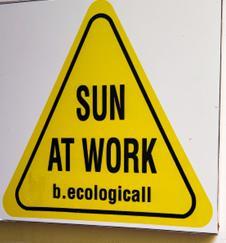
Now, just because they are very eco-friendly, it does not mean that their rooms and other spaces doesn’t offer modern conveniences.
Each of the 5 beautiful rooms have their own private bathrooms, modern air-conditioners, and are outfitted with great ceiling fans. Their WIFI system is top-notch as well. Casa Sol’s solar power also keeps the outlets and lights going in the rooms too.
Each room is individually decorated in keeping with 18th Century style. The beds are so comfortable, and the rooms are pristine clean. The high-ceilings are optimal for circulating air and the fans will surely keep you refreshed. For the warmer times of the year, the built-in air conditioners are a great modern touch.

Another reason why Guests love to stay at Casa Sol is because Eddie just simply spoils them with incredible breakfasts foods.
Every delighted guest will smile as they tell you that it does not matter if you stay for four days or seven days, no breakfast will be repeated in your morning service. Need a gluten-free breakfast? No problem! You only eat plant-based foods? Eddie got you! You want a vegetarian breakfast? All you need do is say so! Your special dietary needs will not be any less special nor less delicious.

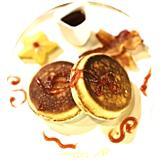







There’s always mountain grown Puerto Rican coffee with frothed milk and a selection of local fresh fruit. Next will be pastry- like a guava filled cake with powdered sugar- that’s 1 example. For your main course (Yes, there’s 3!) would be a full entrée. I’m talking sweet potato waffles, Eggs Benedict with a Casa Sol style Hollandaise sauce, a traditional San Juan Mallorca (if you’re truly lucky!), coconut pancakes or toast stuffed with eggs and cheese. That’s just a few of the offerings (it’s included with your stay!)
Local but elevated Boricua-style breakfasts with an Eddie Ramirez twist served daily are reasons enough to stay at the beautiful Casa Sol Bed and Breakfast. Tell them H. Luiz sent you!
Eddie Ramirez and Tisha Pastor- they not only take care of their Guests, but they really care and respect their Neighborhood. That’s very important.
I know that when the last hurricane hit or if there’s simply power outages, Casa Sol has provided energy to others. Thanks to their solar power panels, they were able to supply and service their Neighbors. The ability to plug in a device, mobile phone, coffee machine, and/ or laptop can truly be a life-saver. They have encouraged others to harness the Power of the Sun and so now there are a few in the Neighborhood who have since installed solar panels as well.

Eddie and Tisha have a deep respect for others. They want to preserve the tranquility and peace of their residential Neighborhood. It’s also where they live. Neighbors and Guests alike regard Eddie and Tisha in the highest esteem. As we sat for our interview, Guests would politely interrupt, smile, and say things like, “Another great, delicious breakfast- thank you!” or “I swear, that’s the best night’s sleep I’ve had in years.” and “The art pieces are incredible!”
As I sipped my Puerto Rican coffee, I heard Eddie organizing car service for Guests and the delivery of Goods. I heard Tisha explain the aesthetics of her artistic vision for the foliage in the courtyard to the horticulturist. You can see that their energy and positive vibes are reflected in all that they do. I believe that who you are as a person impacts how successful your business is.

*Casa Sol BnB is the only establishment of its kind in all of Viejo San Juan. Some may say- that’s not right, there are many beautiful Airbnb’s in San Juan, Puerto Rico. But a Bed and Breakfast (BnB) and an Airbnb are two very different operations. Travelers and Journalists are also interchanging the meaning of the two and so it can get very misleading and confusing.
An Airbnb is a lightly regulated home-sharing site that lets almost anyone list accommodations for rent- including Bed and Breakfast properties.
A Bed and Breakfast is a smaller establishment (usually 4 to 6 rooms) that offers overnight lodging and includes a full breakfast on the next day(s). Often family-run, Hosts live on-site in separate quarters. The Host(s) will typically make breakfast themselves and can tell you about the best spots to visit. Since they live on the property, they know the points of interests in the surrounding areas better than anyone. They can guide you from where to go for dinner, what are the must-see attractions, the best museums to visit and who has the best coffee in-town.
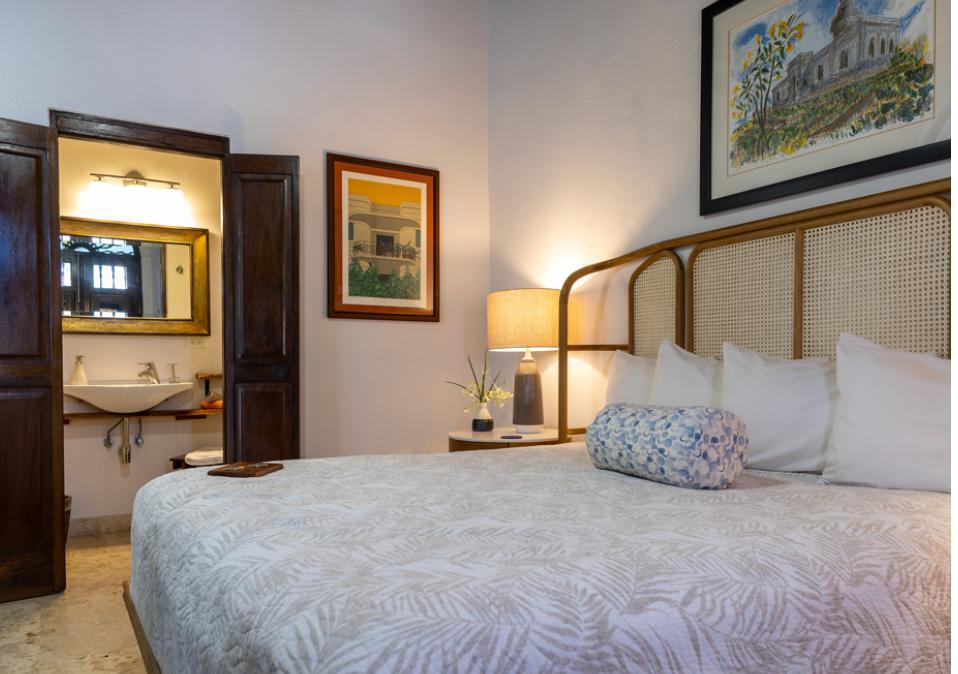



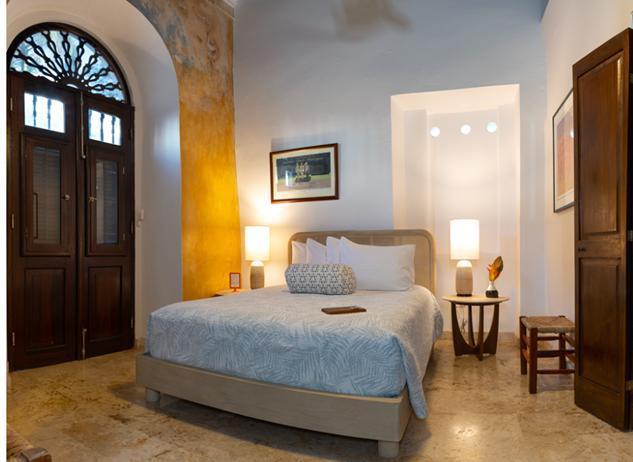















Seat location on any plane is serious business. The difference between one row to another, can be hundreds of dollars. Proximity to entry/exit doors and restrooms also affects flight dollars. Ease of access is also a big consideration as well as comfort level when choosing an airplane seat.
Henry would absolutely always choose the aisle seat. Until I remind him that his arm or shoulder would surely get bumped every time someone walks passed him. Not to mention that he would have to get up every time I or the 3rd person in our row, needed to get up to stretch our legs or use the restrooms.
“That bit of work you like to do and those little naps- nope!”
So we purchase the window and middle seats when we travel as a pair. The only drawback, I find is that if we need to use the facilities, we have to ask the aisle person to please excuse us. Sometimes, they want you to climb over them- uhm no, you have to get up, sorry! Or worse, they get up to use the restrooms but leave the tray-table down full of beverages and snacks. Sometimes they leave their laptops and phones on their seat- still attached to power cords. It’s like a minefield! I usually have to say, “Hiwe need to use the facilities too, do you mind clearing the way?”
(internal eye-roll).
But most times we luck out and the 3rd seat in our row is unoccupied. When that happens, we lift up the arm rests in between and sit “loveseat” style on the plane- it’s really quite comfortable.

Which seat is a better bet for your money? Most people overwhelming say it’s the one near the window. I would have to totally agree.
You can control the window shade (ever try to catch a nap and have full sun in your face? – not cute.); no one is going to ask you to please get up because they need to use the facilities and no one is going to bump your side (especially that beverage / food cart) while you try to work or nap.
The only benefit to the aisle seat is that you can get in and out without having to wait on someone. However, you have to move every time someone in you row needs to get up. Plus you have all that traffic in the actual aisle.
The middle seat may be the least desirable for me- if I’m travelling alone. If I’m with Henry, it’s not too bad because we can lean in close with each other, put the arm rest up and be quite comfortable like we do at home. But if I’m travelling alone, I never book the middle seat. You get all the negatives and none of the benefits of the window & aisle seats. And you’re constantly positioning for an arm rest in that middle seat too.
So, which is the best seat- the window seat of course!






The Casa Saffra creators are a sister duo- Monique and Bianca. They say that their business is much like them- the perfect combo of classic but different, innovative and creative.
Casa Saffra may just happen to have the very best Vacation Homes I have seen in San Juan, Puerto Rico. These curated spaces are wellsuited to Host Weekend Getaways, Family Vacations, Reunions and Corporate Events. The furnishing and artwork are just incredible and spectacular. These Homes were created for luxury, laughs, and lasting memories.
Monique took me to see the properties under the Casa Saffra umbrella and these vacation short-stay rentals are exquisite. They are so designed and curated with local artisans. The re-use and up-cycling of pieces were not only ingenious, but breathtaking. Every room of every space of every home was beautiful.
The bathrooms were large, clean, and had lots of beautiful tilework throughout. They did not skimp on the luxurious towels and toiletries. The kitchens were huge and fully stocked with pots and pans for you to cook. But if you want to have Full-Service Add Ons, it’s available too.

Casa Saffra has many vacation homes to choose from- most with pools, most near beaches. They are located throughout San Juan. Their superb service is also unmatched. Trust me when I say, you’ll be more than happy with Casa Saffra.
THE ARTWORK showcased in the vacation homes of Casa Saffra are incredible. Each art piece or painting is displayed with clear intention and purpose.
In Turista, you’ll find modern pop art with lots of color. At the Beach House, the artwork have more of an Island whimsy.
One of the units- Casa Canals, hosts vintage, early recording equipment. On shelves, I saw a couple of portable 8mm film projectors and vintage radio. There was an early camera too. On the floor, I spotted an antique electric printing press machine. Artwork was restored onto Hurricane distressed corrugated metals all through the pretty unit.
Even Monique’s childhood friend’s bike made it as artwork.

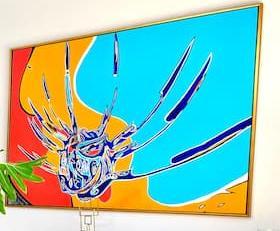

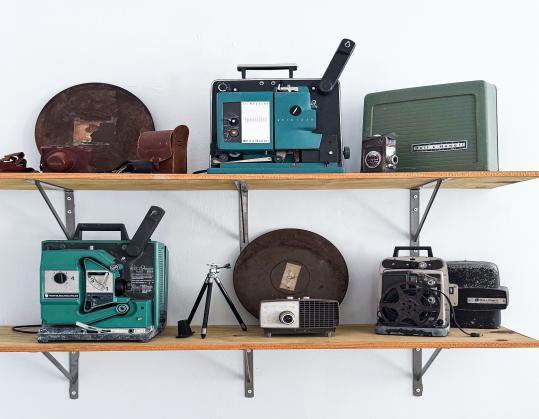



The back façade of La Placita was created with realistic murals that you would swear you saw a Puerto Rican flag swaying in the wind. I was able to recognize a few famous people in the windows and doorways too. The murals on the walls of the outdoor spaces were also done by local artisans.

This Casa Saffra vacation home is nicknamed Turista. It’s an immaculate 5-bedroom house, all with king beds (the sofa bed is huge too), so 12 Guests may sleep beyond comfortable in this ocean-front property.
Turista is very special. Omi Harper stayed there when she was having her watch parties for Next Level Chef, Season 2 back in 2023.
Then about a month ago, I saw the house again (actually 17Million+ have seen it too) in Bad Bunny’s music video for his song Turista.







What are the odds that I’m writing about Casa Saffra’s proprietor, Monique Casablanca, and about the social impact of Bad Bunny’s music, the economic impact of his residency at “El Choli,” plus how Puerto Rico can be supported through tourism- all reconvened in 1 EYC issue? Too much!







*available exclusively on AMAZON
Meditative Art, Art Therapy, Mindful Art or simply just Doodling has been around since forever- they're found in caves for goodness sakes. Don't let anyone tell you any different. Create fun, easy patterns and create beautiful designs- I call them tableaus. Inside, I'll tell you how I got started (40+ years ago) and how you too can benefit from creating your own tableaus. I even show you how you can make one-of-a-kind gifts with your artwork.



Over 40 years ago, I used to doodle on everything I can get my hands on. It wasn't until I started doodling on my homemade book covers (I started with brown paper bags but graduated to white kraft paper) that people really started to notice my artwork.


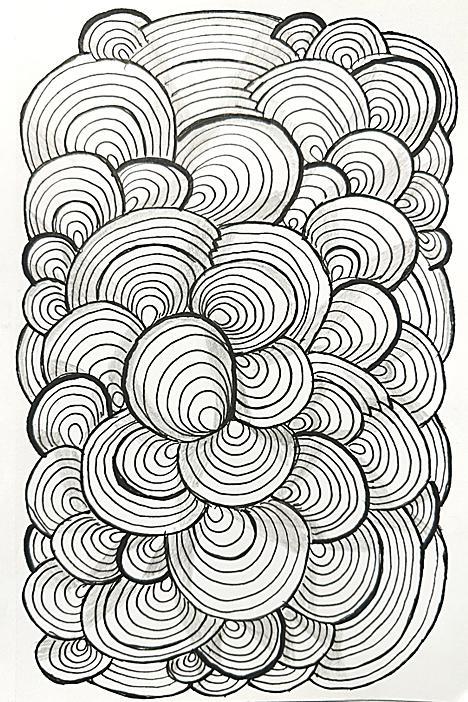


It’s finally here- the coloring book for Meditative Art and Positive Vibes! Some of the tableaus that I’ve done on Live Streams, some postcards that I’ve sent to you, some of the giftbags that I’ve designed and even some new designs and patterns too- all here for you to color.
A lot of you have expressed that coloring is just as therapeutic for you, so this book was created with that in mind. You may color with as many colors as you’d like or as little color as you would like as well.

Doodling, drawing and coloring kept me calm, motivated and positive- I’m sure it can do the same for you. All you need do is give it a try.
Coloring tableaus that I have already created gives me double the calm, twice the meditations and two time all the fun. There’s already a 2nd book in the works- a larger book with bigger spaces to color. Some tips and tricks to blending too. This will be out in 2025.



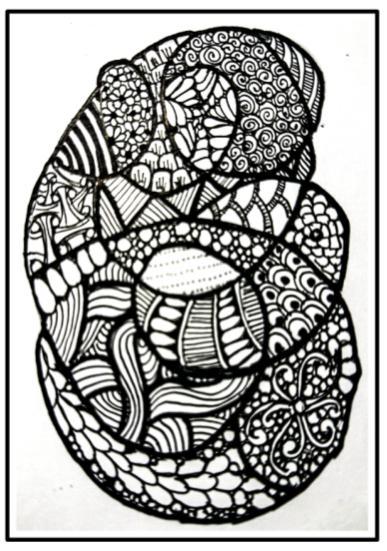

on AMAZON
I wanted to introduce Meditative Art and Positive Vibes to our youth but on a level that was easy for them to understand. Creating this coloring book with the same principles and meditative properties as the 1st book was really the goal and intention.
This coloring book teaches our children to take ownership of their art work. Which in turn, gives them the very tools that they may internalize to take ownership and some responsibility over their very young lives.

When I was a child, I would color the people, animals and objects in my coloring books(s), colors that were in my imagination. People might be colored a light shade of blue or a dark shade of green with hair colored- orange or pink. Cats and dogs may be purple. The sky may be a cool red or a warm yellow tone, and the sun a bright turquoise.
The actual sky is blue of course but I couldn’t control that but I could control my coloring books though.







Draco Cornelius Rosa, also known as Robi Draco Rosa, or simply Draco, is a multiple-time Grammy and Latin Grammy winning Puerto Rican musician, singer, songwriter, composer, multi-instrumentalist, dancer, record producer and entrepreneur.
In 2014, Draco created Café Horizonte, a premium brand of coffee. In 2017, he created a new local coffee brand called “Draco Rosa 100% Cafe de Puerto Rico”with coffee farmer Lester Marin. Their coffee farm directly impacts the local economy by increasing employment on the island of Puerto Rico.
The coffee is just delicious! It has a smooth, velvety texture with a subtle chocolate flavor, and hints of other nuts and fruits. It's a medium roast, which contributes to its balanced flavor. Draco Rosa coffee is grown on an eco-farm (Horizonte) located at the Monte Sagrado Reserve in the Central Mountains of Puerto Rico. It is certified organic and fair-trade.
Cosechado, elaborado y empacado en Puerto Rico, Draco Rosa's 100% Café de Puerto Rico es un producto de calidad que valida la pasión del agricultor puertorriqueño por cultivar la tierra para ofrecerle al consumedor sus mejores frutos. Apoya la agricultura local, hecho en Puerto Rico.



Draco Rosa 100% Cafe de Puerto Rico is so delicious, and if you want pure, authentic coffee from the Island, then just tap on the logo to order yours right now! This coffee is delish!

Draco Rosa is not the only 100% coffee grower in Puerto Rico, there are others who make great-tasting, authentic coffee too. There are many, but these are the ones that took the time to meet with me in Puerto Rico. After great convos and great cups of coffee (a couple bags too)- here are the ones that I liked. Plus- follow up interviews with these in upcoming EYC issues.
787 Coffee is a "farm-to-cup" coffee company that grows, processes, and roasts its coffee beans on its farm, Hacienda Iluminada in Maricao, Puerto Rico. A 100% Puerto Rican single-origin coffee experience. I can drink a pot of this coffee.


¡WEPA! Coffee Co. uses 100% Puerto Rican Arabica coffee beans for their "El Original" coffee, emphasizing the singleorigin and quality of their product. This coffee is amazing!


Café El Coqui is an amazing 100% Puerto Rican Coffee brand. The flavor of this coffee reminds me of Mami’s (my Abuela’s) coffee. She had this rich coffee similar to Café El Coqui.







We all do it, we juice up the batteries on our devices- the night before or the morning of our travels. By the time we get to the airport, our mobile devices are at 50-60% already. Fortunately, we see all of these free charging stations with USB connectors and we think,
“I might as well juice up my batteries to 100% ‘for free’ while I’m here just waiting.”
Unfortunately, juicing up your electronic device at free USB port charging stations in airports and hotel lobbies, might have consequences. You could become a victim of "juice jacking," yet another cyber-theft tactic.
Cybersecurity experts warn that some folks can load malware onto public USB charging stations to access your electronic devices while “charging”. Malware installed through a corrupted USB port can lock a device or export personal data and passwords directly to the perpetrator. Criminals can then use that information to access online accounts or sell it to other mal folks.
The FCC has warned us about this years ago but left it up to us to worry about it… or not. But now the FBI is warning us of this cyber theft. Airports are now responsible to regularly check USB ports and charging stations and to report any and all suspicious activity too. Don’t fall victim to juice-jacking!
These cyber-thieves may also install extractable jump drives that may look like actual USB ports attached to charging stations. Some may even give you a free “USB charger” with malware to download your info and deets.
•Avoid using public USB charging stations. Use an AC power outlet instead.
•Bring AC, car chargers, and your own USB cables with you when traveling.
•Carry a portable charger or external battery.
•Consider carrying a charging-only cable, which prevents data from sending or receiving while charging, from a trusted supplier.
•If you plug your device into a USB port and a prompt appears asking you to select "share data" or “charge only,” always select “charge only.”
Many Wi-Fi users choose to use public networks instead of their own devices' data plans for accessing the internet remotely. But the ease and convenience of public Wi-Fi is risky. If you're not careful, hackers may quickly access your connection and compromise sensitive information stored on your device and in online accounts. Here are some travel tips.
•Check the validity of available Wi-Fi hotspots. If more than one hotspot appears claiming to belong to an establishment that you're in, check with the staff to avoid connecting to an imposter hotspot.
•Make sure all websites you exchange information with have "https" at the beginning of the web address. If so, your transmitted data will be encrypted.
•Adjust your smartphone's settings so it does not automatically connect to nearby Wi-Fi networks. This gives you more control over where you connect.
•If you use public Wi-Fi hotspots on a regular basis, consider using a virtual private network, which will encrypt all transmissions between your device and the internet. Many companies offer VPNs to their employees for work purposes, and individuals may subscribe to VPNs on their own.
•When transmitting sensitive information, using your cellphone data plans.
Although there is no wrong time to eat a great medley of seafoods, most folks get that party started in May.
The fish mongers start putting out their fresh shellfish out on sale and the Spring weather seems to cry out for seafood boils.
You can even have Seafood Broils where you broil your seafoods instead of boiling them in a delicious stock. You can even mix in some saffron rice and make a Spanish paella dish. If you use a gravy (marinara sauce) then you can make The 7 Fishes, a traditional dish served over pasta or bread in Sicily and Italy served during the High Holy Holidays.
Now all those dishes mentioned above are best made cooking your seafood ingredients with the rice or with gravy/sauce served over bread or pasta. It gives those other starch ingredients lots of seafood flavor.
I particularly do not enjoy that as much as most people- especially my extended families. That’s why I like my seafood boil. I drain the stock from the seafood (use the seafood stock for other dishes) and enjoy my seafood boil simply and plainly.


Is really the easiest thing to put together. It’s just starting with a great stock and the timing of dropping ingredients into the stock. Some ingredients cook faster than others and raw / fully cooked ingredients also have their timing off so you have to properly plan.
Here are my ingredients (but use what YOU like): : mini lobster claws, crabs, shrimp, black mussels, chorizo, mini potatoes, corn on the cob, onions, lemon, lime, orange and lots of garlic, herbs and red pepper flakes. I also use my homemade chicken stock but a great store-bought will do nicely too. I no longer use “butter” but it was part of my original recipe. Nowadays, I add some edamame for a surprise new twist to my Seafood Boil. Here’s a full video tutorial of my Incredible Seafood Boil.









When I visit Old San Juan, Puerto Rico something happens to my mind, body and my very spirit. A feeling of connection, a sense of belonging washes all over me Whether I’m looking through the magnificent gateway door, La Puerta de San Juan, or in the lookout posts, garitas, of El Morro something touches my soul.












Much like my other favorite historical cities, (Santo Domingo’s Colonial City, Dominican Republic 1498; Panama City’s Casco Viejo, Panama 1671; New Orleans’ French Quarter, Louisiana 1718) Mi Viejo San Juan, PR 1521 is so vibrant with ancestral energy. You feel the Spirits of the Ancestors.





We have to face historic facts that although we have deep pride for our historic cities, it was our people, indigenous Taino and imported African Slaves, that were the ones that built this magnificent city.

Imagine being an indigenous nation and being invaded and enslaved. Then imagine being forced to labor and build some of the first forts in the New World to protect the city from other invaders and conquerors. Imagine building some of the first cathedrals and churches- where you were forbidden to pray and to practice a religion that was forced upon you. Imagine being forced to build hospitals where you could never receive medical treatment and aid. Imagine building schools where education was forbidden to you. Those facts are never lost on me and I imagine that all the time- and still I’m proud! Proud to be a descendant of such strong, enduring people. We have survived and our beautiful ancestors left us a beautiful city, despite their hard circumstance. So when I walk the cobblestoned streets (where each stone was hand-cobbled and laid) of Mi Viejo San Juan, it’s with that knowledge and pride that I saywepaaaaaaaaaaaaaaaaaaaaa!





In Old San Juan, 16th century houses were singlestory, had one or two doors, and had inner gardens. The second floors and balconies were added from the 17th century onwards to allow for expansion. The islet was very tiny, so you built upwards. Later, houses were constructed west ofthe area.



The first streets and blocks of the little island (islet) were built in a grid pattern. This allows ventilation between buildings and streets. Today’s modern city blocks (especially those like NYC) were modeled after this grid pattern as opposed to winding roads.









San Juan's historic Spanish colonial architecture is simply something you have to see up close and personal. Today, Old San Juan reflects four centuries of development that shapes the urban landscape. Today, it’s the nation's most complete Spanish center with Gothic, Renaissance and Baroque architecture.
The material used to build structures in the 16th century, including forts, is called mortar and consists of limestone, sea sand, and brick. Incidentally, The Taino People used mahogany and guano (dried palm tree leaf) to build their houses in pre Colonial Puerto Rico.





Walking through these cobblestone streets, one feels proud as one reflects upon the culture Then and Now. I look at the streets, the plazas, the main Squares, the forts and castles and think, “WE DID THAT!”


There are many things to do and explore when visiting Old San Juan. Put on a comfortable pair of shoes (sneakers are best) and just walk through its 74-block radius of beautiful architecture.
The restaurants, shops, tours, bars and clubs throughout the historic town can send your senses into overloadbut in the best ways possible.
Every time I visit Puerto Rico, I make sure to always spend time in Viejo San Juan. Whether I’m with Henry, a fun group or even going solo- I’m always happy to have come.
The Nightlife in Old San Juan is nothing but Incredible! La Factoria made the Top 5 Best Nightclubs in the world. It’s constantly makes Arthur Frommer’s list of best taverns and has been playing great salsa music in it’s 6 bars for 10 long years!
Be sure to check out my Gastro-Tour at a restaurant I have never set foot in before- La Ó Pizza & Tapas. It’s really no surprise that I have never eaten there since there are nearly 300 restaurants in Viejo San Juan. The foods they have offered at La Ó were delicious, cooked to perfection and presented so beautifully. I can’t wait for you to see the pictures!

We are bringing back the hashtag #askhluiz to the social media stratosphere. In your own posts and / or comments, if you ask a travel or cooking question that you want me to try to answer, use the hashtag #askhluiz and I may be able to answer your question.
Please note that all #askhluiz question may be read by anyone and everyone so please keep it cute or keep it on mute. Your question may be published or posted in Eat Your Colors magazine and / or any “H. Luiz Presents…” media channels in order to answer your question to a broader audience.
Also keep in mind: I am a Travel Journalist and a Publisher. I am not a Travel Agent. You’d be surprised how many people (strangers and friends) ask me if I can get them the best rates for said hotels and resorts. Sometimes they ask me if I can book the cheapest airfare for them too. Or they’ll say/ask: I’m celebrating my [insert milestone event her] and I have only this much [insert amount here] to spend, what’s the best you can do for me? Uhm… what??
Most times, it’s just folks wanting me to do the research for them. Don’t they have the same search engines as the rest of us? Do they have time to price check and price compare their own travel plans? Because I truly don’t. Most places I stay are complimentary because they want content creation, create a video for them or feature them.
All that being said, do not use #askhluiz to make your travel plans and / or make your travel bookings. I am not a Travel Agent.



We love Mexico! It is the Country that we have travelled to the most as a couple. It was also the very first trip that we’ve taken together outside of the U.S., over 25 years ago. Mexico is so special to us- did I tell you that we love it?
We’ve been to Mexico well over 30 times from Cancun to Acapulco to Oaxaca to Puerto Vallarta to Cabo and to all the towns in between.
So when we were invited back to the Excellence Riviera Cancun, Henry ran and packed his bags well before I hung up my phone.
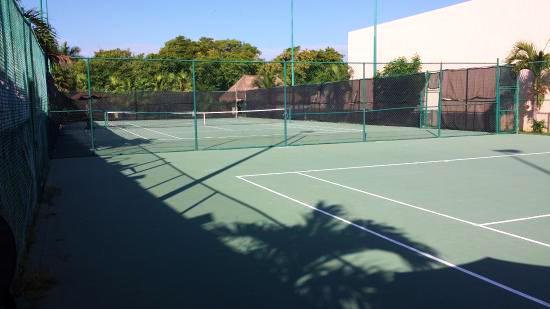


We really like the resort, especially the beach, 7 pools, and the Excellence Club. But it’s the tennis courts that we really go crazy for. When we visit the Excellence Riviera Cancun, we play every evening underneath the Mexican Sky. We love it!
The Excellence Riviera Cancun is an adults only resort- Henry appreciates that. The property has 10 restaurants, and 11 bars/ lounges for all the Guests. However, we recommend the Excellence Club for all the extra amenities.


At the beautiful restaurant, Chez Isabelle, we had Chef David do a classic H. Luiz Gastro-Tour and he created over 8 tasting dishes. Plus the Sommelier, Enrique Chaves, selected great-tasting wines to compliment the tastings.
Manuel Lopez Arias, the Manager of Chez Isabelle, made sure that all ran smoothly. Manny, as he is affectionately known, has been a staff member at Excellence Riviera Cancun since it opened in 2004. However, Chef David has been there for 9 years and reached the remarkable level of Chef at Chez Isabelle. We are so proud of him and we could not wait to enjoy his delectable creations on our Gastro-Tour. We quickly setup a meeting to discuss the details. This was not our 1st GastroTour at the Excellence Riviera Cancun, but it was going to be our very first one with Chef David. Please don’t misunderstand, the foods at Chez Isabelle is one of the very best on the resort. The French inspired restaurant’s menu alone would make for a great tour. But an H. Luiz Gastro-Tour is setup to allow the Chef to demonstrate what he can do off menu. It allows the Chef to shine!
An H. Luiz Gastro-Tour happens when GMs & Chefs invite us to their restaurants to taste sample size portions of what the establishment or property has to offer. Most times the small plates comprise of 3 to 4 proteins, 1 vegetarian dish, 1 vegan dish and 1 dessert. The plates were paired with wines too. Chef David was incredible- this tour allowed him to flex his culinary muscles. Here’s how it went…
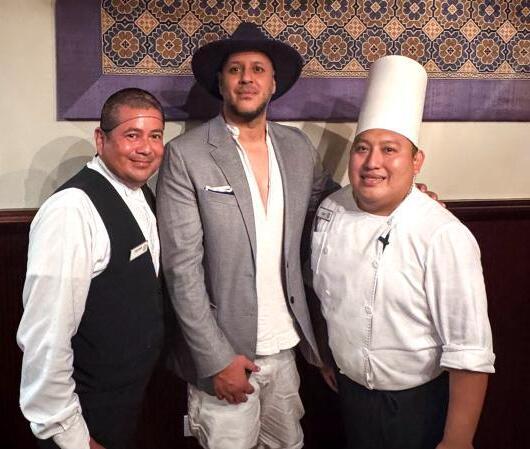
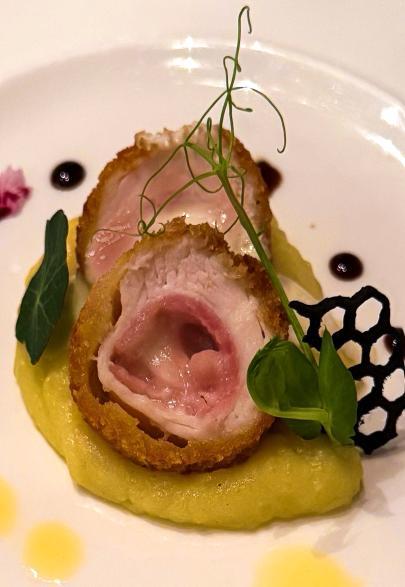
The 1st taste was a Chicken Cordon Bleu. The chicken was so tender and juicy, but the breading was light and crisp. The inner ham was also perfectly cooked and the Gruyère inside was amazingly creamy. Chef David set the dish atop a potato purée, seasoned with local herbs.
We have not had Chicken Cordon Bleu in over 20 plus years and for the life of me- I don’t know why.
The Chicken Cordon Bleu was paired with a Rosé, which just happens to be one of Henry’s favorite wines.

The next taste was salmon. It was so flaky and delicious that I could not tell if it was poached, steamed or bakedthat’s how amazing it was. There was a citrus- saffron glaze too, which was drizzled around the small plate too.
The perfectly seasoned rice that the fish was served with was tasty as well. Henry reminded me to take it easy, to not get full on rice, that there was more food coming.
A crisp Sauvignon Blanc was paired with this dish- the textured notes created a pleasant balance on the palate.
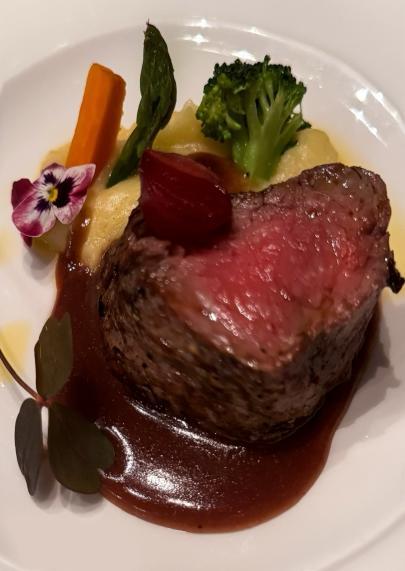
The filet mignon has got to be the one small plate that I look forward to in all of my Gastro-Tours. To cook a small, petite filet mignon (actually, a smaller portion) you have to know what you are doing. If a Chef can slay that, then the rest should be amazing. Chef David did not disappoint and he knows how to cook a filet mignon. It was so juicy and succulent and the tour could have ended right there.
A nice glass of Cabernet Sauvignon was enjoyed with this beautiful piece of art. Cheers for Chef David!
The vegan sample is always a tricky one. However, this beautiful, stuffed pepper was so delicious and fresh. More and more people are eating plant-based foods, so it is important than chefs know how to create vegan meals. Chef David created a medley of vegetables and mushrooms- delicately bathed in herbs and oils, held together by a light, corn-bread stuffing. The rice was just as delicious with notes of saffron. This tasty vegan meal was paired with a Chardonnay.
Let me tell you about this amazing Ratatouille dish, it was incredible- this was the vegetarian small plate. The classic ingredients of eggplant, zucchini, tomatoes, bell peppers, onions, garlic, and herbs, were all stewed together in a light tomato sauce and vibrant olive oil. The cheese (yes, most vegetarians eat dairy and eggs) was a blend of Gouda, Swiss, and Goat cheeses. This small plate was also served with a Chardonnay. The light notes pair well with vegetables and cheese.
Chef David Dzib Cén spoiled us with 2 desserts to try. He knew of my love of pistachios and so he created a pistachio crème brûlée. I was so impressed! It was airy, light, yet rich with flavors. He actually torched the top tableside as the sugar crystals browned to perfection. The flavor of real pistachios was evident throughout. I was overjoyed. I do believe that this dessert is now available on their regular menu at the Chez Isabelle French restaurant. At least it should be!
Henry was treated to an Apple Tatin- I got to taste it too! The apple slices were caramelized to perfection, nutmeg and cinnamon notes- not overpowering. And the scoop of dulce de leche ice cream was applauded.








Tell them H. Luiz sent you!



These tips will give you the ease of packing your carry-on luggage, expediting your boarding process and allowing you the time to enjoy your next travel adventure.
If I had to pick just one tip, one golden rule, that I live by when packing for a trip, it would be: the clothes I wear to a destination are the same ones that I wear going back home. This tip frees up valuable space in your carry-on and leaves room for other must-have items. Usually, when one arrives at a destination, they change clothes anyway.
An added bonus to the Golden Rule would be to wear your bulkiest items as your inflight travel clothes- including your blazer, sweater and footwear.
Items that can be incorporated throughout your travel stay- say like a great blazer or great pair of shoes are an extra bonus that will help lighten your travel loads too.
Lastly, checkout times for hotels and resorts are pretty early. Why waste space in your luggage and why waste an entire outfit if you are to leave by 11am anyway? Wear your same outfit (change your undergarments of course) for your travel back home. So instead of packing for a 5-day stay, you’ll be packing for just a 3 to 4 day stay instead.
Dress for activities that you’ll be engaging in. If you're spending most days in a spa, by the pool or on a beach, do not pack lots of day clothes. Instead, bring an extra bathing suit or two. If you are not planning to work-out, do not bring your gym attire. Also, if your nights are going to involve nightlife, conferences and/ or fancy dinners- limit yourself to a blazer or two. The one you’re wearing on the plane can serve as one and maybe pack an extra. Dress them up or down to fit the occasions.
I always bring extra underwear- if I go away for 5 days, I’m bringing at least 10 pairs. Taking 2 to 3 showers a day while away is quite common. You’re taking showers after your workouts, after your chlorinated or salt-water swims, before your events and dinners plus before sensual play and before you go to bed. Trust me, you need lots of underwear, way more than you may believe.
I usually wear an athletic-cut suit with sneakers (the same pair I may use for the gym) and what I would pack is a pair of shoes, a few T-shirts, 2 dress shirts, jeans, khakis, couple of track pants, some black tank tops (if I’m feeling really fit) and lots of accessories like pocket-squares, hats and caps. I’d also bring a small travel bag as my “personal item”. I can mix and match all of these clothes and accessories and create about 8 looks, while packing just 3 outfits. I’ll use 1 blazer (the one I’m travelling with) or 2 for all the looks.
























